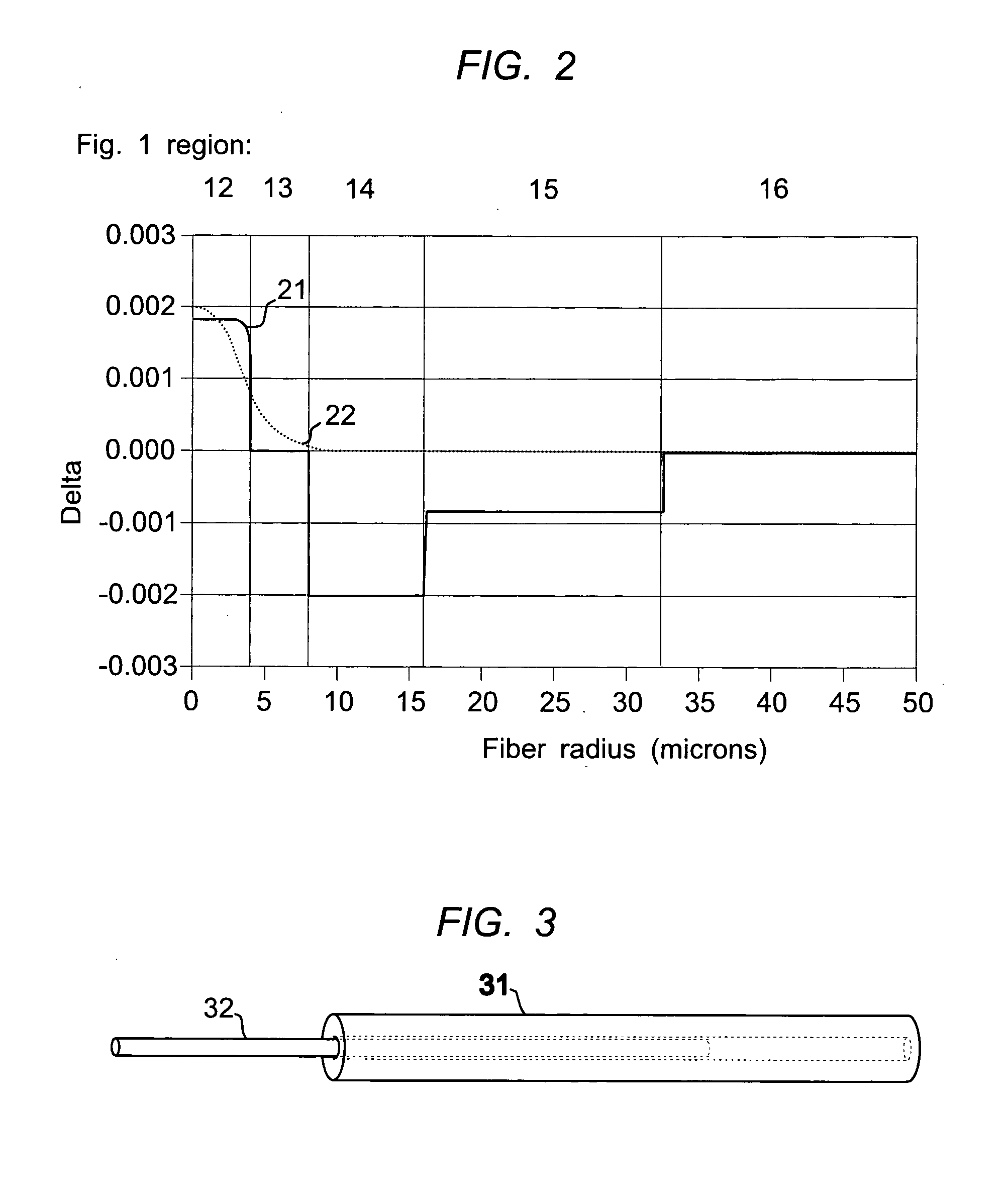Low loss optical fiber designs and methods for their manufacture
a technology of optical fiber and design method, applied in the field of optical fiber design, can solve the problems of optical fiber loss characteristics produced using these methods, and achieve the effects of reducing the level of dopant related excess scattering loss, high productivity, and different loss characteristics
- Summary
- Abstract
- Description
- Claims
- Application Information
AI Technical Summary
Benefits of technology
Problems solved by technology
Method used
Image
Examples
Embodiment Construction
[0020] Low loss fibers with low or zero water peaks are effectively produced by the VAD or OVD methods in large economical preform sizes (greater than 90 mm OD). The lowest 1385 nm losses (specified less than 0.31 dB / km and typically 0.275 dB / km) are most consistently achieved with core rods produced by the VAD method, in preform sizes as large as 150 mm. The MCVD method is typically used to produce smaller preforms (60 to 90 mm) with somewhat relaxed water peak specifications compared to VAD. This commercial practice results from the fact that core material deposited by VAD or OVD is usually inherently more dry ([OH]<1 ppb) due to the dehydration of the soot prior to sintering. A second causative reason is that it is possible to make large bodies with large D / d ratios with VAD or OVD; this means that the first overcladding interface can be far away from the core (i.e. low optical power) in a large core body (much greater than 90 mm). The MCVD process normally produces to lower D / d ...
PUM
| Property | Measurement | Unit |
|---|---|---|
| depth | aaaaa | aaaaa |
| depth | aaaaa | aaaaa |
| radius | aaaaa | aaaaa |
Abstract
Description
Claims
Application Information
 Login to View More
Login to View More - R&D
- Intellectual Property
- Life Sciences
- Materials
- Tech Scout
- Unparalleled Data Quality
- Higher Quality Content
- 60% Fewer Hallucinations
Browse by: Latest US Patents, China's latest patents, Technical Efficacy Thesaurus, Application Domain, Technology Topic, Popular Technical Reports.
© 2025 PatSnap. All rights reserved.Legal|Privacy policy|Modern Slavery Act Transparency Statement|Sitemap|About US| Contact US: help@patsnap.com



